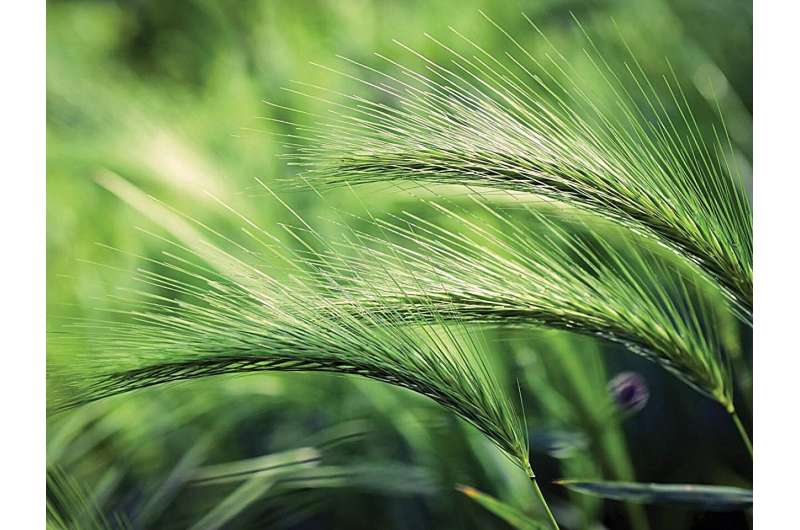This article has been reviewed according to Science X's editorial process and policies. Editors have highlighted the following attributes while ensuring the content's credibility:
fact-checked
peer-reviewed publication
trusted source
proofread
Sugar permeation discovered in plant aquaporins

Aquaporins, which move water through membranes of plant cells, were not thought to be able to permeate sugar molecules, but University of Adelaide researchers have observed sucrose transport in plant aquaporins for the first time, challenging this theory.
The finding, made by researchers from the School of Agriculture, Food and Wine, widens the concept of aquaporins' role in plant biology and will have implications for the bioengineering of plants for food production and plant survival.
Aquaporins, which belong to a class of membrane proteins known as water-transporters, were first identified in 1993 by American molecular biologist and Nobel Laureate, Peter Agre. The concept of water-permeation in small molecules was accepted at the time, but it was unclear if aquaporins could permeate larger molecules, such as sucrose.
This has now been demonstrated, with researchers employing a multidisciplinary approach to observe the biochemical process in HvNIP2;1, which is a Nodulin 26-like Intrinsic Protein found in barley.
"We used nanobiotechnology, electrophysiology, protein chemistry, protein modeling and computational chemistry. We also integrated vast experimental and theoretical data with phylogenomics exploring around 3,000 aquaporins," said the University of Adelaide's Professor Maria Hrmova.
HvNIP2;1 is different from other sub-clades of aquaporins in that it has altered structural characteristics and thus it acquired the ability to transport saccharides. Researchers are interested to see what other functions it may serve and how this relates to in planta function.
"We also performed full-scale steered molecular dynamics simulations of HvNIP2;1 and a spinach aquaporin—a structurally and functionally divergent aquaporin compared to HvNIP2;1—revealing potential rectification of water, boric acid, and sucrose. This will be the subject of future studies," said Professor Hrmova.
The discovery has been published in the Journal of Biological Chemistry.
"This work exemplifies that we need to be more open-minded about what different aquaporins may permeate, besides water," said the paper's co-author, Professor Steve Tyerman, who previously revealed ion permeation in plant aquaporins.
"Water may be secondary to other important molecules in aquaporins, or some may be co-transport water and other molecules by virtue of a vast array of protein-ligand interactions," said Professor Hrmova.
Understanding the properties of aquaporins is important for bioengineering to design novel proteins with improved characteristics, such as substrate specificity, thermostability, and folding.
These properties are fundamental to the survival of plants as they mediate water and nutrient uptake, govern the distribution of solutes through plants, remove toxins from the cytosol, and recycle valuable sugars.
Given their gatekeeping functions, aquaporins and other membrane transporters are attractive targets in agricultural biotechnology for increasing nutrient contents in edible parts of crop plants, excluding toxic elements, which together directly affect crop quality and ultimately sustained production of our food.
More information: Akshayaa Venkataraghavan et al, Barley Nodulin 26-like intrinsic protein permeates water, metalloids, saccharides, and ion pairs due to structural plasticity and diversification, Journal of Biological Chemistry (2023). DOI: 10.1016/j.jbc.2023.105410
Journal information: Journal of Biological Chemistry
Provided by University of Adelaide




















